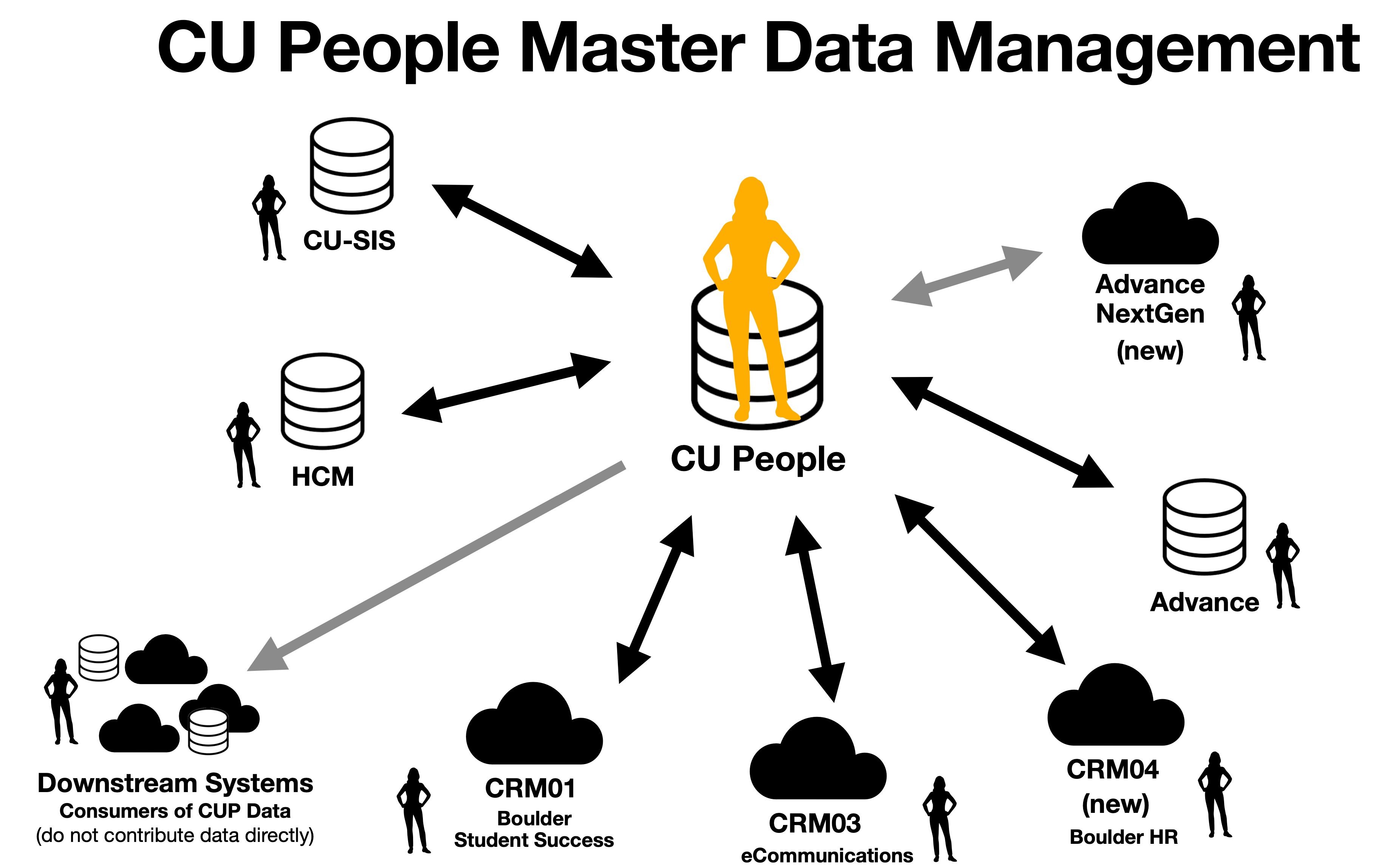CU Alert: All enterprise and business applications are available. See email for additional information.
Portal Status: Green
04 - 20251215 reCAPTCHA Self-Service Password Reset Resolved
CU Alert: All enterprise and business applications are available. See email for additional information.
Portal Status: Green
The CU System Administration offices, UIS and the UIS Service Desk will be closed from Wednesday, Dec. 24 through Friday, Jan. 2.
We will reopen at 8 a.m. Monday, Jan. 5. Happy holidays to all CU employees and their families!
CU People is a suite of data management applications within a single system that stores basic information about the university’s constituents, however they interact with us. CU People also keeps track of all the different university systems that store data about a person and help these systems work together to identify individuals.
CU People enables sharing of data between multiple source systems (where appropriate) and can make decisions about the “best” value for specific data based on set rules (refer to Image 1: CU People Systems Diagram). CU’s Data Management Groups help make sound business decisions that set the rules for data matching.
If you are using a CU VPN, you may also visit the CU People Resource page to learn how to request CU People data, current match rules and additional details.

Objectives:
CU People meets the following objectives for CU staff who work with data:
Benefits:
CU People provides numerous benefits, including:
Previous systems: Master Data Management (MDM)
Related systems: CU Student Integrated Systems (CU-SIS), Human Capital Management (HCM), Advance Alumni/Donor system, eCRM Salesforce system
Where to go for help: Contact the UIS Service Desk @ help@cu.edu or 303-860-help(4357)
1800 Grant Street, Suite 300 | Denver, CO 80203 | Campus Mail 050 SYS
CU Help Line: 303-860-HELP (4357), E-mail: help@cu.edu | Fax: 303-860-4301